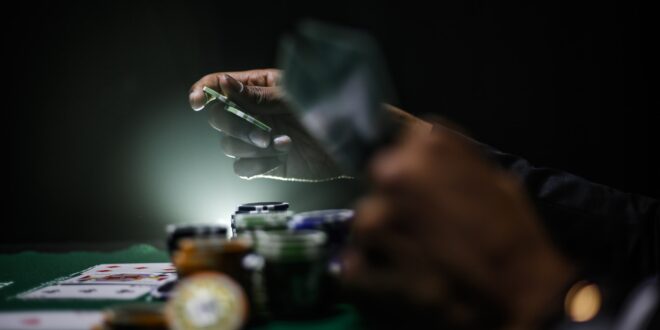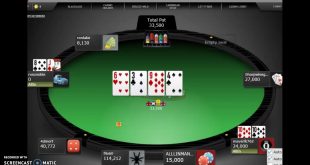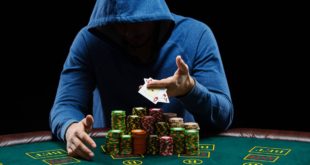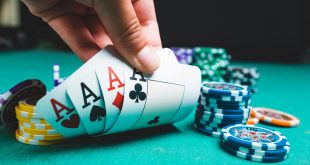Just as Sun Tzu taught the art of war, mastering the art of bluffing in Winmasters Poker Rooms in 2024 is your modern battlefield strategy. You’ll learn that it’s not just about having the best hand; it’s about convincing others you do. As you navigate the virtual felt, you’ll become adept at reading the digital room—picking up on subtleties and using them to your advantage.
Your arsenal will include perfecting your poker face, even in the absence of physical tells. You’ll size up your bets to apply pressure at the right moments and understand when to fold ’em, lest your bluff gets called. Remember, it’s a fine line between a well-executed bluff and a costly mistake, so you’ll need to tread carefully while keeping your opponents on their toes.
Understanding Bluffing Fundamentals
In mastering the art of bluffing, you’ll need to grasp the core principles that govern this deceptive strategy in Winmasters Poker Rooms. A sound bluffing strategy hinges on knowing when to bluff and how to bluff. It’s not just about throwing chips into the pot and hoping for the best. You’re playing a psychological game, using deception in poker to manipulate the narrative at the table.
The art of bluffing requires keen observation—reading opponents is paramount. You must decipher their poker betting patterns, understand their table image, and predict their reactions. Bluffing tips often suggest looking for signs of weakness or hesitation in your adversaries, which can signal an opportune moment to execute a bluff.
Poker bluffing isn’t merely about the cards in your hand; it’s about the story you tell. Consistency in your narrative convinces opponents of your hand’s strength, increasing bluff success factors. Remember, how you’ve played previous hands will affect your current table image, influencing the likelihood of a successful bluff.
To optimize bluffing in Winmasters poker, consider your position, the community cards’ implications on perceived hand ranges, and stack sizes. These elements should align to create a credible threat, compelling opponents to fold. Ultimately, strategic deception can turn an average hand into a winning one.
Assessing Your Table Image

Your table image is a critical factor that you must evaluate to enhance the effectiveness of your bluffs in Winmasters Poker Rooms. Good players constantly assess how they’re perceived at the poker table, crafting an image that can be used deceptively.
If you’ve been playing tight, your rare bluffs are more likely to be believed. Conversely, a loose image might necessitate a shift in strategy to ensure your bluffs aren’t seen as just another wild play.
To leverage your table image effectively, you need to pay attention to how your opponents are reading your playing style. Are they adjusting their betting patterns in response to your actions? Your attention to your opponents is as crucial as their attention to you.
Consider the following points to assess and utilize your table image:
- Historical Actions: Your past plays at the table significantly influence your current image.
- Opponents’ Perceptions: Gauge whether opponents see you as conservative or aggressive.
- Bluffing: Use your established image to inform when and how often to bluff.
- Playing Style: Adapt your playing style to keep opponents guessing.
- Reading Your Opponents: Pay attention to cues indicating whether opponents buy into your image or suspect a bluff.
Strategic adjustments in response to these assessments are key to mastering the art of bluffing.
Perfecting Bet Sizing Techniques
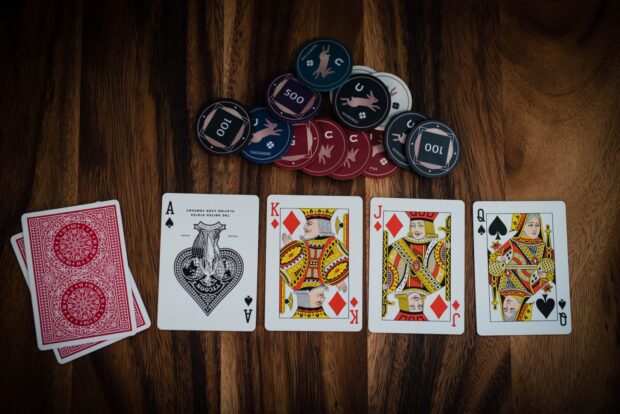
Having established a table image, it’s essential you now focus on mastering bet sizing, a skill that’ll significantly enhance your bluffing tactics in Winmasters Poker Rooms. Bet sizing requires careful consideration of pot odds and stack size to make informed decisions. When betting or raising, your bet size needs to convey the right message to your opponents, suggesting strength or weakness as part of your strategic play.
To bluff effectively, analyze your opponents likely holdings and their tendencies. A bet that’s too small might signal weakness and invite calls, while an overly large bet risks too much for too little gain. Your chances of success increase when your bet size aligns with the potential range of hands you could credibly represent.
Recognizing Prime Bluffing Opportunities

To consistently recognize prime bluffing opportunities, you’ll need to meticulously evaluate both the players and the dynamics at the table. Mastering the skill of bluffing is not just about boldness; it’s about timing and precision. Recognizing when your opponents have weak hands is crucial. The right time to bluff hinges on numerous factors that can deceive your opponents and prompt them to fold.
- Analyze the playing poker position: Bluff from late positions to capitalize on information revealed by earlier actions.
- Assess opponents’ hand ranges: Target players who have demonstrated a wider, more vulnerable range of hands.
- Scrutinize the community cards: A flop that doesn’t likely improve your opponents’ hands creates a ripe bluffing scenario.
- Utilize player statistics: Employ data like fold-to-bet ratios to gauge the likelihood of opponents folding.
- Detect bluffing signals: Observe for erratic betting patterns or sudden aggression as indicators of bluff vulnerability.
Your poker strategy should integrate these elements to consistently spot the prime bluffing moments. By doing so, you’ll be able to execute bluffs that are not merely shots in the dark but are informed, strategic moves that enhance your chances of winning in Winmasters Poker Rooms.
Executing Successful Semi-Bluffs

Mastering semi-bluffs requires you to integrate your understanding of prime bluffing opportunities with a calculated approach to bet sizing and timing. When you deploy semi-bluffs, you’re not just taking risks; you’re honing an essential skill in your betting strategy. This technique hinges on making your opponents think you have a stronger hand than you actually do, while still holding cards that have the potential to improve.
To execute this effectively, pay close attention to the texture of the board and your position. If the flop is likely to have missed your opponent’s range, it’s a prime moment for a semi-bluff. Your bet sizing is a tool here—large enough to show strength, but not so large that you commit yourself too deeply without a made hand.
Deciphering Online Poker Tells

In online poker rooms like Winmasters, you’ll find that paying attention to subtle cues can reveal when someone’s trying to bluff. While you can’t see body language, the behavior of online poker players provides other forms of valuable insights. Bluffing requires a keen eye for these digital tells, especially when deciding whether opponents are overplaying a weak hand or underplaying a strong one.
Here are some tell-tale signs to look out for:
- Quick Decisions: Hasty bets or folds might indicate a premeditated strategy, often associated with a bluff.
- Pausing and Betting: Taking longer to bet could suggest strength, as if contemplating how much value they can extract.
- Bet Sizing: Inconsistent bet sizes can be a clue; a sudden increase might mean a bluff, while consistent betting often suggests confidence.
- Pattern Recognition: Notice if a player deviates from their usual betting pattern—this shift could signal a bluff.
- Chat Box: Some players reveal their state of mind through comments or reactions in the chat, providing hints about their hand.
Bluffing Across Different Streets
Understanding the nuances of bluffing throughout the stages of a hand, from pre-flop to river, will sharpen your competitive edge in Winmasters poker rooms. Pre-flop, your strategy might involve bluffing to assert dominance early and to gauge your opponents’ confidence in their hands.
Here, you’re laying the groundwork for future streets, using types of bluffs like the “semi-bluff,” which carries some insurance with a hand that has potential to improve.
As the flop reveals more information, your bluffing tactics must adapt. You’re now considering the texture of the board and how it interacts with your perceived range. Betting aggressively on a high-card flop can represent a strong hand, compelling opponents to fold their mediocre holdings. Accuracy in your story is the Art of Deception – you’re painting a believable picture that your hand is the one to beat.
Moving to the turn and river, the stakes of bluffing increase. Players who’ve stuck around are likely more committed to their hands. Here, you need a keen sense of the Opponents Hand and their possible holdings.
Your bluffing must be selective, targeting specific weaknesses to be successful poker. A well-timed bluff on these streets can turn an otherwise unprofitable hand into a winning one, but missteps can be costly. Always ensure your play remains credible and your betting patterns inscrutable.
Identifying Opponents’ Bluffing Patterns
Building on your foundational bluffing skills, you’ll now learn how to spot when your opponents in Winmasters poker rooms are attempting to deceive you with a bluff. Identifying opponents’ bluffing patterns is an essential part of poker strategy, as it can clue you into their weaknesses. Bluffing is more effective when it’s unpredictable, but players tend to exhibit certain tells, especially when they’re less likely to have a good hand.
Here’s what to look for:
- Betting Patterns: Sudden changes in betting size or speed can indicate bluffing.
- Player Statistics: High aggression factors might suggest bluffing tendencies; a low fold-to-bet ratio means they’re less likely to fold.
- Timing Tells: Quick bets or delays can betray a lack of confidence in their hand.
- Behavioral Deviations: Unusual actions or gestures that differ from their typical gameplay might reveal anxiety or excitement.
- Contextual Clues: Consider the stakes and the stage of the game—someone is likely bluffing when they’re desperate or trying to establish dominance.
Mitigating Risks of Getting Caught
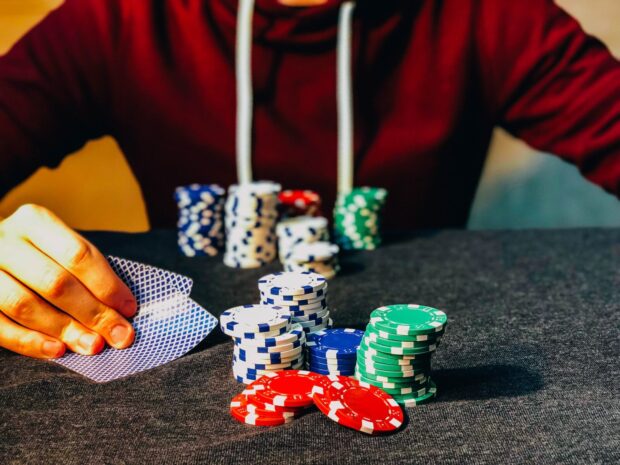
To reduce the risk of your bluffs being uncovered at Winmasters poker tables, you’ll need to refine your approach to deception. It’s essential to make bluffing without detection a calculated move. When considering whether to bluff, it’s important to consider not only your current hand but also the effective stack sizes of your opponents. Larger stacks might be more willing to call, so targeting shorter stacks can sometimes encourage players to fold.
Avoid bluffing too frequently against inexperienced players; they’re less likely to recognize the subtleties of your play and may call when a more seasoned player would fold. This could lead to you being caught more often than not. On the flip side, when playing against veterans, it’s crucial to mix up your tactics. If they’re perceptive, they’ll notice patterns in your bluffing strategy.
Remember, having a strong hand occasionally when you’re bluffing adds credibility to your deception. It’s a psychological game, and you want your opponents to be uncertain whether you’re holding a powerhouse or air.
Lastly, if you can’t maintain a calm demeanor, fly under the radar as much as possible. Uncomfortable body language can be a telltale sign of bluffing, so practice a poker face or avoid bluffing when you’re feeling nervous.
 Poker Players Alliance Casino & Gambling Articles 2024
Poker Players Alliance Casino & Gambling Articles 2024
